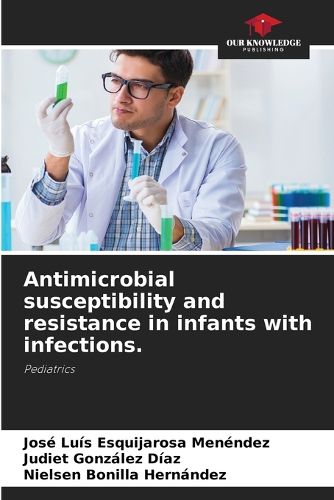Readings Newsletter
Become a Readings Member to make your shopping experience even easier.
Sign in or sign up for free!
You’re not far away from qualifying for FREE standard shipping within Australia
You’ve qualified for FREE standard shipping within Australia
The cart is loading…






Descriptive, longitudinal and prospective study, at the Hospital Comandante Pinares de San Cristobal, during the period May 2017 to May 2019. The objective was to determine the behavior of antimicrobial susceptibility to first choice antimicrobials in infants with urinary tract infection. The variables were: age groups, sex, clinical forms of presentation, isolated germs, antimicrobial susceptibility and alterations in complementary examinations. The study universe consisted of 127 infants admitted to the pediatrics service with a diagnosis of urinary tract infection, respecting inclusion and exclusion criteria. We observed that 3rd generation cephalosporins showed high levels of resistance while Amikacin showed a low level and the highest sensitivity was shown by Nitrofurantoin. Urinary tract infection predominated in the female sex, except in the age group between 1 and 3 months of age, where the male sex predominated, being also in this age group where there was a higher incidence. Escherichia coli was the most frequent microorganism.
$9.00 standard shipping within Australia
FREE standard shipping within Australia for orders over $100.00
Express & International shipping calculated at checkout
Descriptive, longitudinal and prospective study, at the Hospital Comandante Pinares de San Cristobal, during the period May 2017 to May 2019. The objective was to determine the behavior of antimicrobial susceptibility to first choice antimicrobials in infants with urinary tract infection. The variables were: age groups, sex, clinical forms of presentation, isolated germs, antimicrobial susceptibility and alterations in complementary examinations. The study universe consisted of 127 infants admitted to the pediatrics service with a diagnosis of urinary tract infection, respecting inclusion and exclusion criteria. We observed that 3rd generation cephalosporins showed high levels of resistance while Amikacin showed a low level and the highest sensitivity was shown by Nitrofurantoin. Urinary tract infection predominated in the female sex, except in the age group between 1 and 3 months of age, where the male sex predominated, being also in this age group where there was a higher incidence. Escherichia coli was the most frequent microorganism.